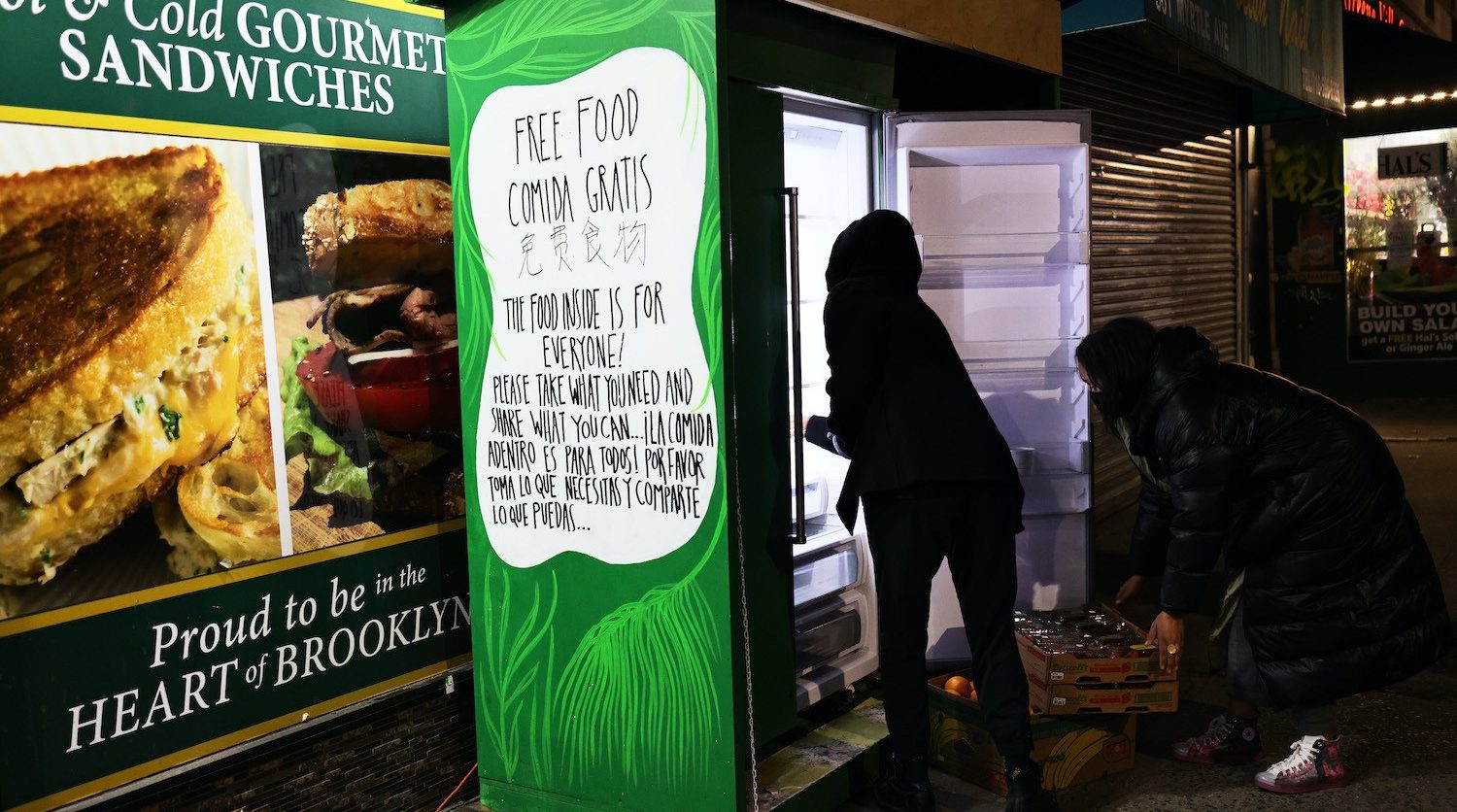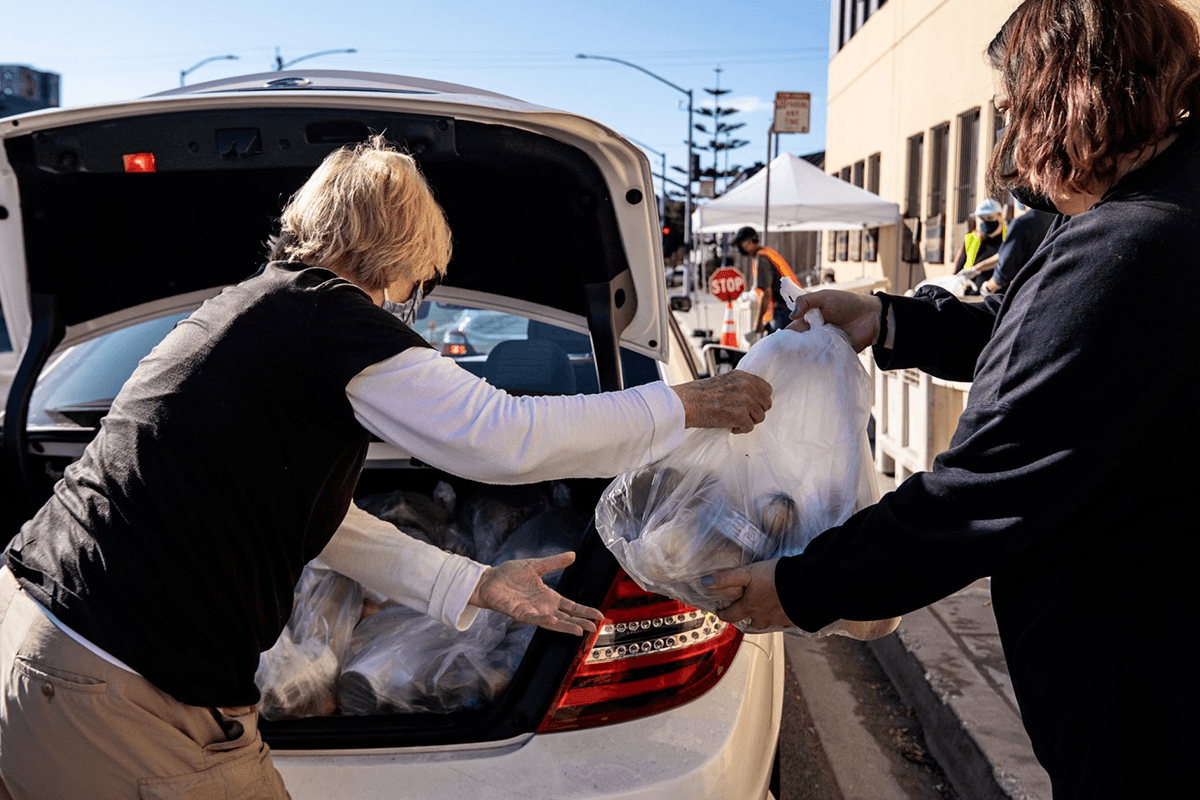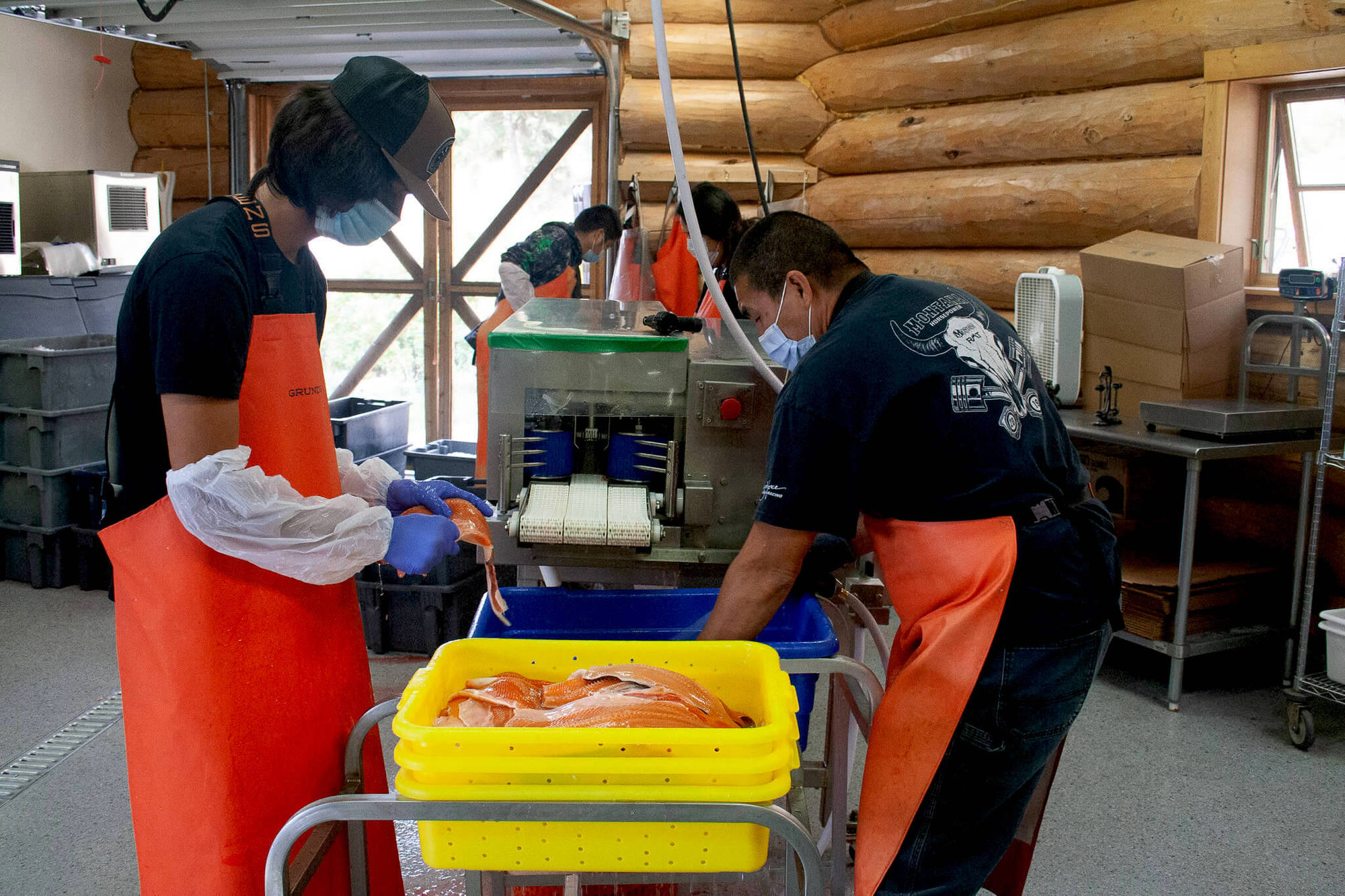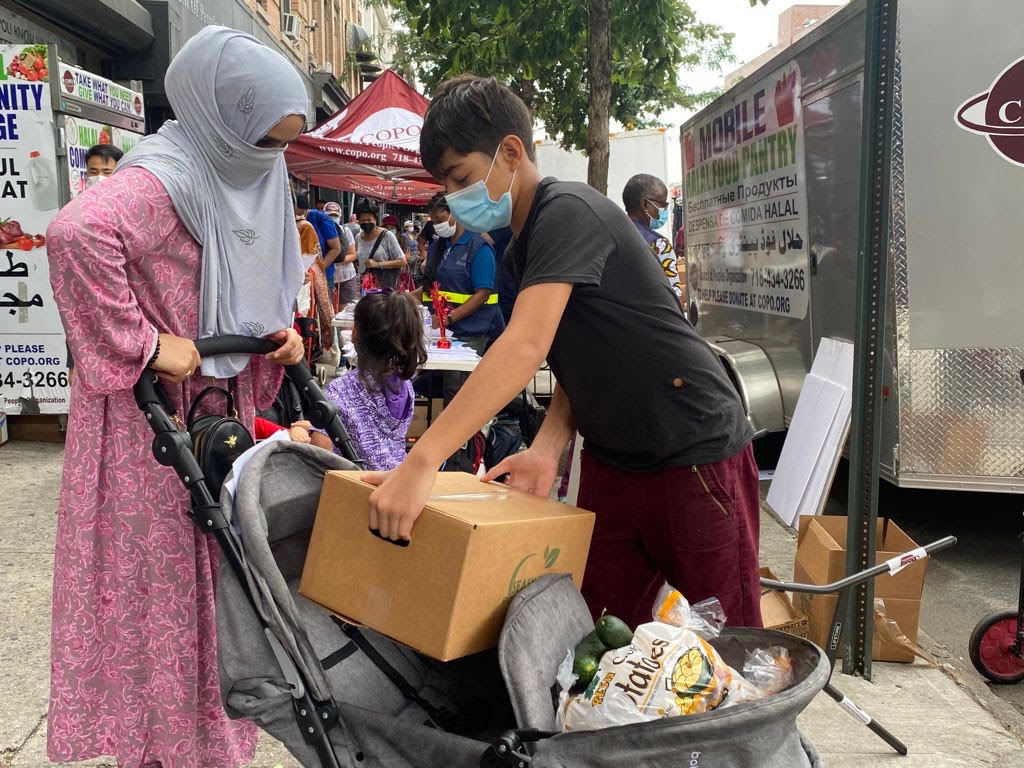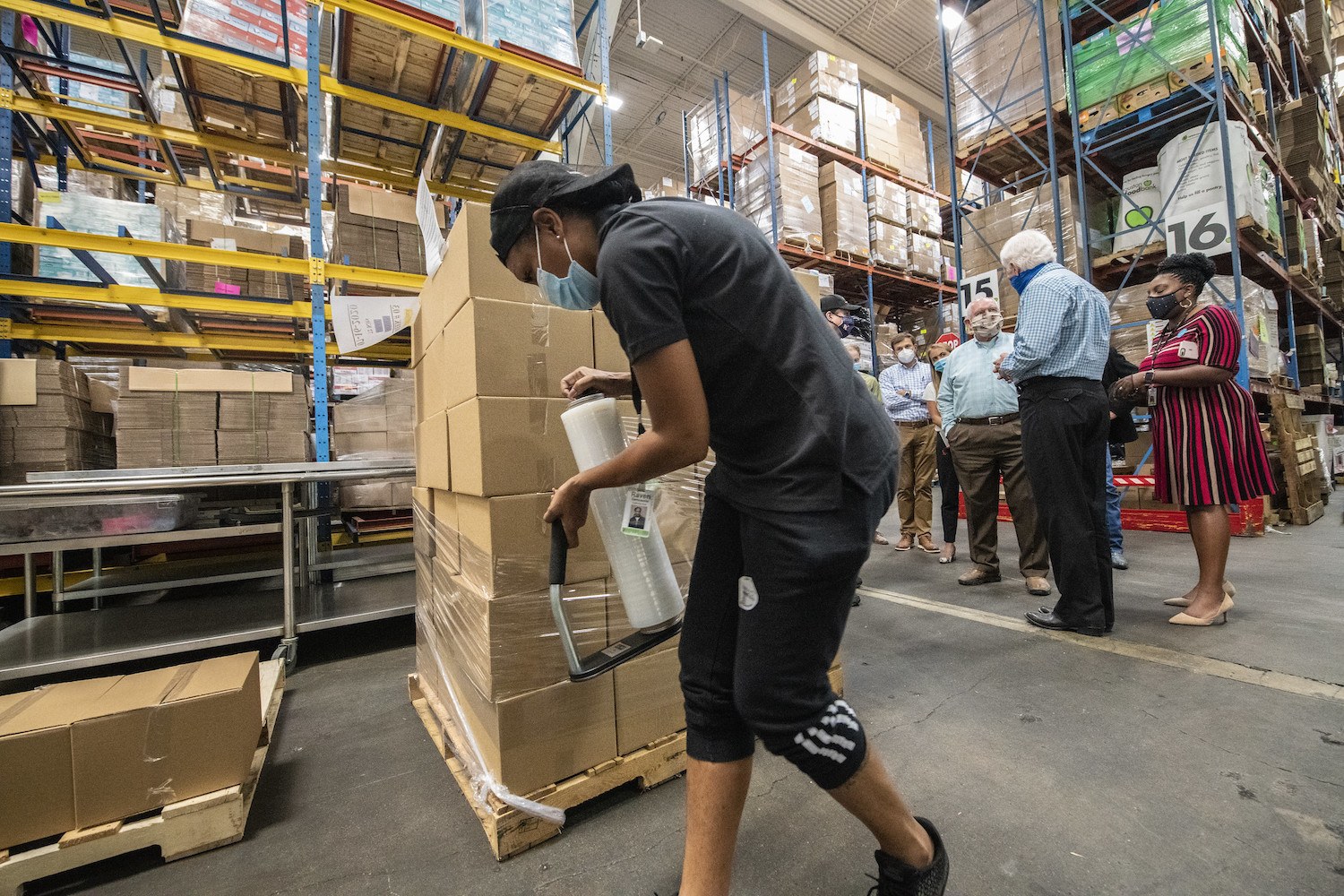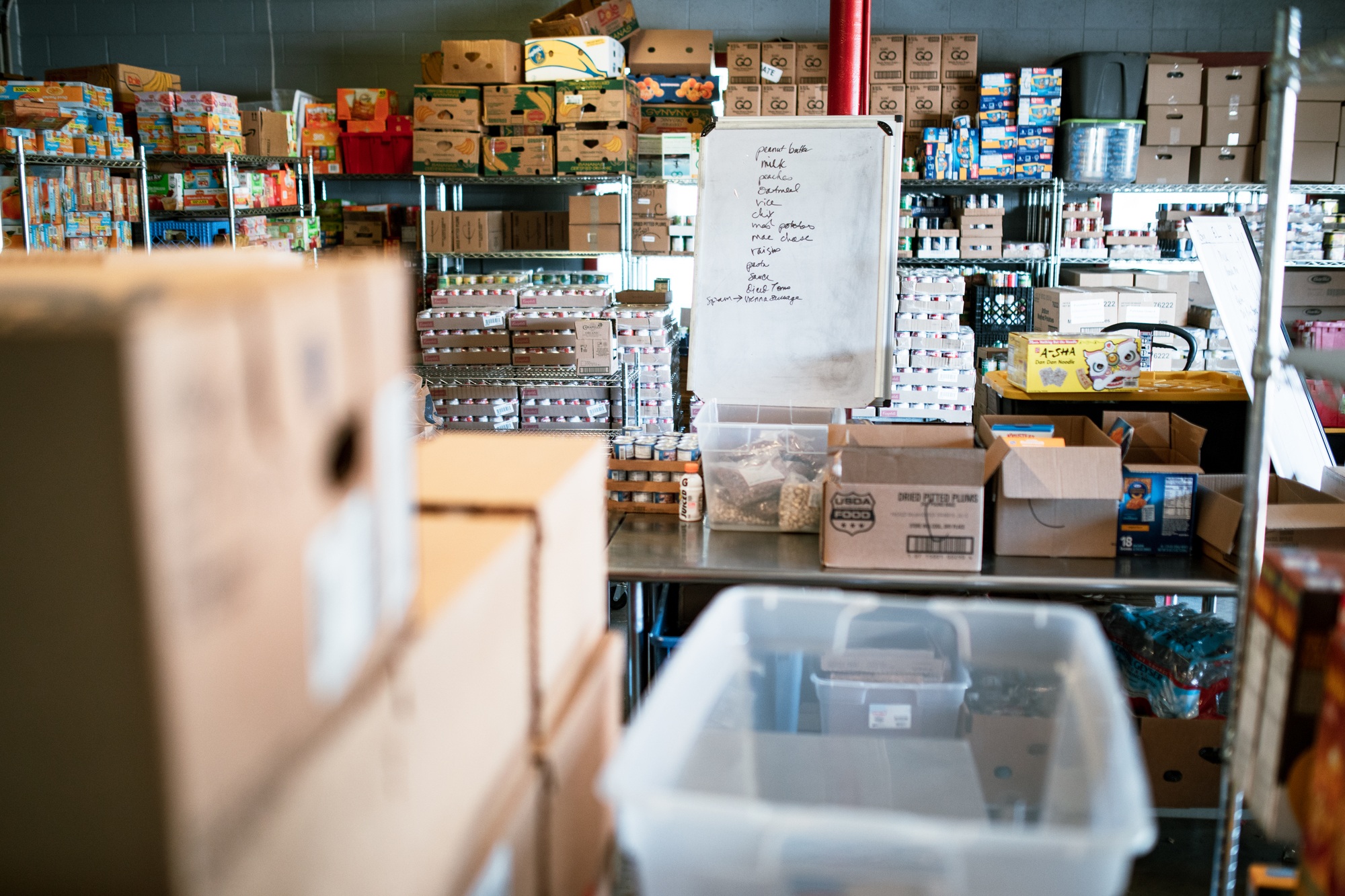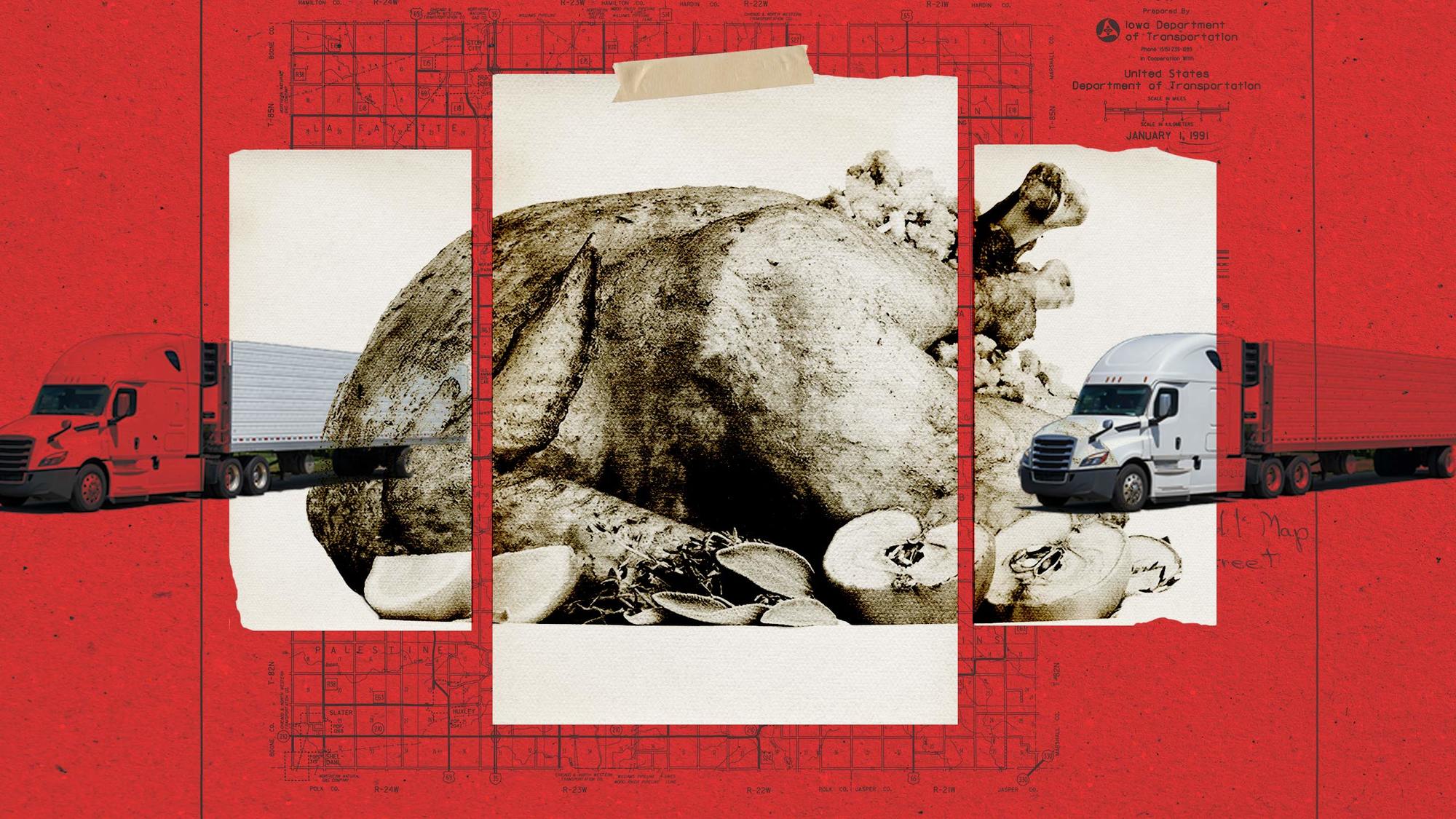
Graphic by Alex Hinton/Images from iStock and Archive.org
Skipping turkeys. Swapping cornbread mix for boxes of stuffing. Reconceiving the Thanksgiving plate entirely. Here’s how food banks and pantries are assembling their inventories for the holiday.
Earlier this month, Sandy Swett wasn’t sure how the Harrison Food Bank could supply Thanksgiving to families in need this year.
Swett is the Maine-based organization’s founder and operations manager. On October 21, she learned that the Department of Agriculture’s Emergency Food Assistance Program did not—and could not—deliver her organization’s vegetable allotment, apparently another victim of the ongoing supply chain crisis. Even more, the national hand-wringing about a turkey supply shortage was proving true, with Swett stockpiling frozen chicken breasts and roast beef for a worst-case scenario.
Scrambling to fill the gaps, Swett announced a last-minute food drive. Locals responded en masse, dropping off 500 pounds of shelf-stable peas, corn, and green beans—still only a handful of turkeys. But then, just days out from the Thanksgiving meal pickup date, Swett got a call from local shipbuilder Bath Iron Works. The company had leftovers from its employee turkey giveaway for the taking—120 cases containing four birds each. And with this chancy, serendipitous donation, come Tuesday, at least 400 families in need will leave the Harrison Food Bank with trunks full of fresh squash and potatoes, boxed stuffing, canned vegetables, and now, turkey.
“I called every connection I had yesterday. I spent a lot of time looking, thinking, ‘I don’t know what I’m gonna do,’” Swett said. “But by golly, I got turkeys.”
In the months leading up to Thanksgiving, food banks and pantries have been navigating a dizzying array of pandemic-era challenges. Many of these charitable food organizations are experiencing the same effects of the supply chain squeeze as the people they aim to serve, whether it’s eating the exorbitant cost run-of-the-mill items like canned vegetables or stuffing, or struggling to even find them. For a number of organizations this holiday season, serving their communities has meant accepting that mashed potatoes and crispy onions might be missing from the menu—barring any last-minute miracles.
“No stuffing is available that I can find anywhere, and I’ve been looking for at least three days now, solid,” said Mary Carpenter, chief operating officer of Community Harvest Food Bank, which serves northeast Indiana, but added that cornbread mix is available. “We’re having to make do with what we got.”
“No stuffing is available that I can find anywhere, and I’ve been looking for at least three days now, solid. We’re having to make do with what we got.”
Heeding predictions that there would be a run on holiday trimmings come November, many food banks and pantries nationwide ordered their Thanksgiving foods months in advance. At the Brooklyn Rescue Mission, with limited freezer space available, Reverend Robert Jackson was handing out Thanksgiving birds as far back as October, the earliest ever for his organization. Now, if he hoped to re-up the food pantry’s supply, it would be impossible. “If we wanted to go and purchase more [turkey and roaster chickens] from some of the food bank networks, they’re not there. They’re gone,” Jackson said, adding that they have supplied holiday meals for over 600 families. “Another year, we could have purchased [turkeys] in the first week of November and they would have been there.”
The limited available reserve this year frustrated some clients. Jackson recalled informing one disappointed elderly man that he could not take home a second turkey for his daughter and her family to cook. But there was a backup plan thanks to his wife, Reverend DeVanie Jackson, who also works at the mission. “My wife bought chickens [as a substitute],” he said. “They were like, ‘OK, I’ll take the chicken.'”
Exorbitant food costs are also a major issue for many hunger relief organizations this year. Vince Hall is chief government relations officer at Feeding America, the country’s largest hunger-relief organization. While food banks have been working to supply clients with some semblance of a traditional Thanksgiving meal, Hall said that the myriad logistics breakdowns across the world are driving up the price tag and hindering their efforts.
“$21 for us, we can supply two weeks of food for an individual, so we’re not buying turkeys this year.”
“We are deeply affected by supply chain disruptions, by food production and transportation shortages, truck driver shortages,” Hall said. “And we are experiencing freight costs that [have] increased by 20 percent versus this time last year on the stock market.”
These challenges resonate with Michelle Book, president and CEO of the Food Bank of Iowa, who’s contending with food purchasing costs that have nearly doubled. Book said that the current price for individual cans of green beans is around 78 cents per unit, up from roughly 41 cents pre-COVID. The freight cost for procuring these cans from California, which are delivered via semi-trailer containing 38,880 cans, has also surged, from $4,000 before the pandemic to $6,000 today. But when it comes to Thanksgiving turkeys, which according to USDA have reached an all-time high price this year, Book said paying for birds is a hard cost to swallow. “If it’s a [15.5]-pound turkey, that’s about $21,” Book said. “$21 for us, we can supply two weeks of food for an individual, so we’re not buying turkeys this year.”
On top of all these other issues, charitable donations seem to be trending down this year as well. Last year, as people celebrated Thanksgiving in quarantine, 34.8 million individuals donated $2.47 billion on GivingTuesday, a 25 percent increase from the previous year. Yet between consumer prices soaring 6.2 percent over the past year, the highest annual increase in decades, and a normalization of the pandemic, many food banks and pantries have found that donors seem more conscious of their wallets this holiday season. “People were very generous [last holiday season], but then it got to be old hat. Covid was out there,” Swett of the Harrison Food Bank said. Last year, she would come home from her trips to the post office with multiple checks to the food bank in hand; now, she said, it’s a good day if there’s one or two. “They’ve [forgotten] about the donations,” Swett continued. “They gave it all last year, especially companies, and this year, they’re not.”
“How can we diversify our menu to include culturally appropriate recipes?”
Hall of Feeding America noted that due to limited inventories nationwide, food manufacturers and retailers have also scaled back their excess food donations, an issue echoed by some of the organization’s member food banks on the ground. Carmen Cumberland, president and CEO of Community Harvest Food Bank, said that local grocery store chains who supported the food bank in the past with surplus food are now clinging tightly to their available stock. “When they don’t have enough on their shelves, they’re not going [to donate to us],” Cumberland said, “because all of them have talked about being worried about being able to meet the need over the holidays.”
But not all menu changes stem from high costs and sourcing headaches. At Kitchens for Good in San Diego, which prepares scratch-made meals as part of its hunger relief efforts, executive chef Ryan Rizzuto acknowledged that a spread of turkey with mashed potatoes and macaroni and cheese doesn’t square with everyone’s idea of a comforting, holiday meal. This year, in fulfilling a donation order for 200 Afghan refugees who resettled in the community, the organization cooked kabuli pulao, an aromatic basmati rice dish, studded with lamb, raisins, and caramelized carrots, and one familiar to the community they were serving.
“It’s really our opportunity to understand who we’re serving, most importantly, and the fact that not everyone that we serve is necessarily having a traditional American Thanksgiving,” Rizzuto said. “How can we diversify our menu to include culturally appropriate recipes?”
Food pantry directors and operators say that making substitutions on the fly and handling the chaos surrounding declines in donations have long been industry-wide challenges. This holiday season, global supply chain disruptions and economic downturn have simply amplified that dynamic. Between out-of-stock instant potatoes and Hail Mary call-outs for any lingering turkeys, these organizations can’t guarantee that every client’s Thanksgiving spread will look like a Norman Rockwell painting. All, however, are ensuring they accomplish their priority mission: getting food to those who can’t find it elsewhere.
“I think everybody is in, you know, crazy times,” Swett said. “[But] am I going to have enough food to pass out? Absolutely.”

